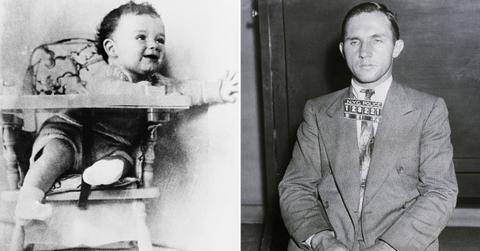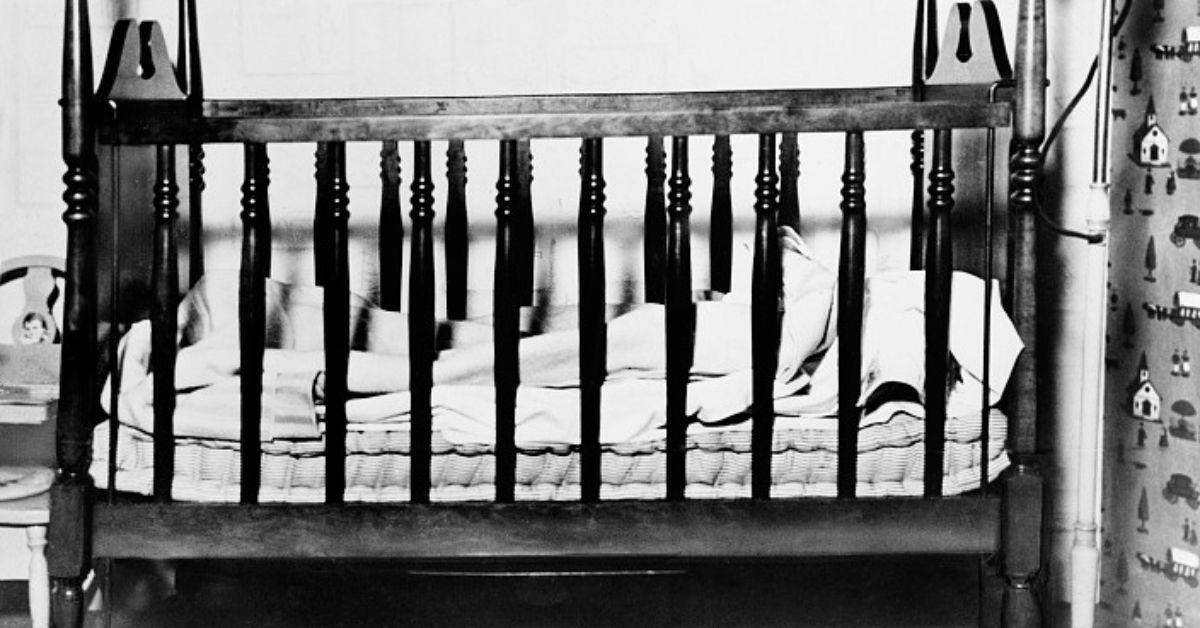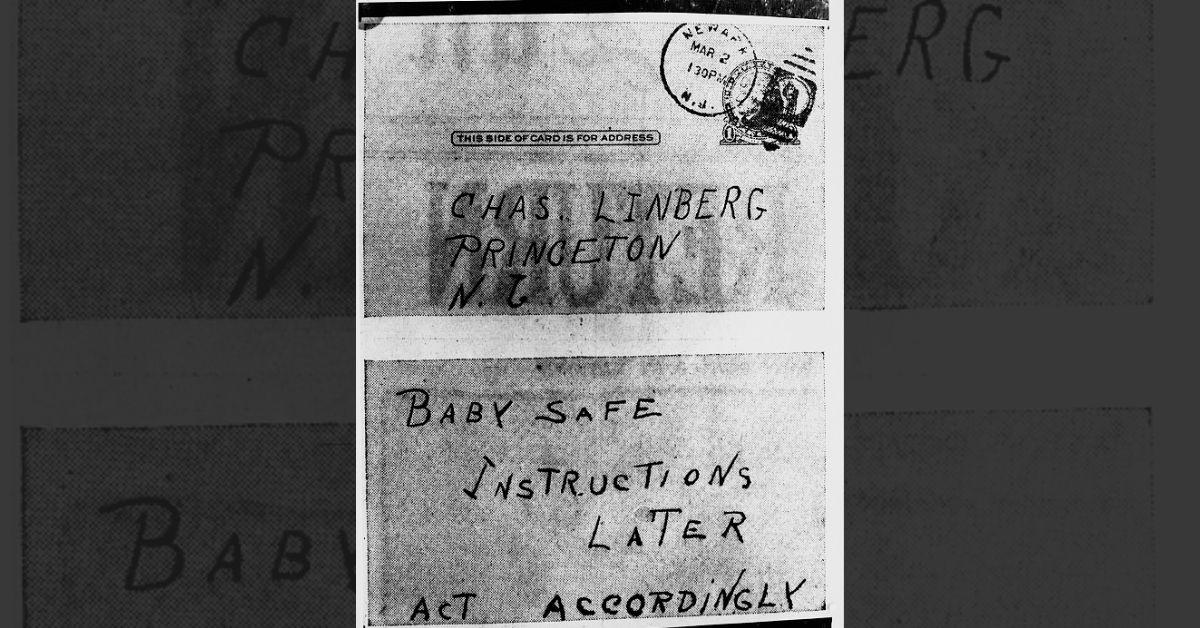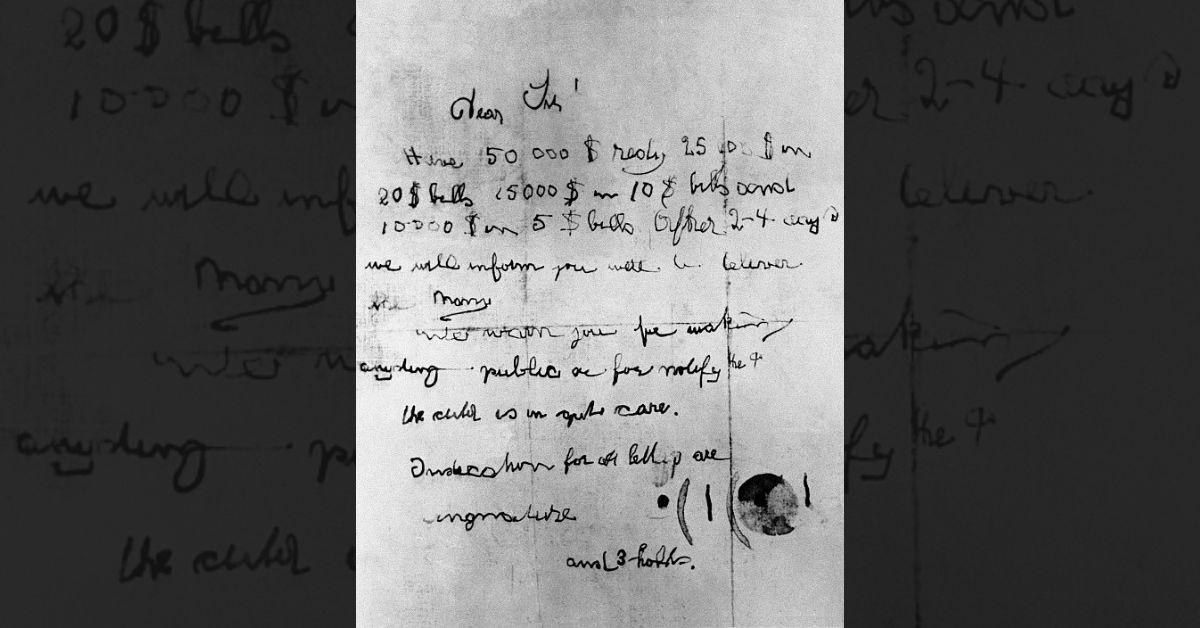The Lindbergh Baby UNTOLD STORY: How Ransom Money Nailed Monster Who Took American Hero's Son

June 29 2023, Published 10:30 a.m. ET
The infant son of American hero Charles Lindbergh was snatched from his crib on March 1, 1932, launching the most famous manhunt of the 20th Century.
A ladder had been used to gain access to the second floor nursery at the Lindbergh's Hopewell, N.J., home.

Police investigate baby kidnappng of Charles A. Lindbergh, Jr.. Ladder against side of house was a telltale sign of the time of baby kidnapping.
The 30-year-old pilot and his wife Anne also discovered a chilling ransom note above a radiator. Riddled with spelling mistakes and bad English, the letter demanded $50,000 in return for 20-month-old Charles Lindbergh Jr.
The nation was outraged and sick over the chilling tragedy that hit "Lucky" Lindbergh, the first man to fly solo across the Atlantic Ocean. Per instructions, the ransom was paid to a mysterious "John."

The empty crib of Charles A. Lindbergh Jr. after his kidnapping on March 1, 1932.
It was delivered to a man hiding in the shadows by John Condon, a retired school teacher who had been contacted by the kidnapper after appealing for the baby's release in a newspaper ad. Condon was authorized by the Lindberghs to act as their go-between.
While the bills used to pay the ransom were not marked, the serial numbers were recorded by authorities. The Lindberghs waited but their worst fears were soon realized.

Card Sent To Colonel Lindbergh By The Kidnapper Of His Baby
On May 12, 1932, delivery truck driver William Allen pulled his vehicle to the side of a road about 4.5 miles south of the Lindbergh home. He went to a grove of trees to relieve himself, and there he discovered the decomposing body of a toddler. Lindbergh helped identify the remains.
Authorities concluded the child had been bludgeoned to death the night he disappeared. The hunt for the child murderer stalled until Sept. 18, 1934, when New York Police Detective James J. Finn and FBI Agent Thomas Sisk got a break.
Never miss a story — sign up for the Front Page Detectives newsletter. Be on the scene the moment news breaks.

The first official picture of the original Lindbergh ransom note which was left on the baby's crib the night of the kidnapping.
They had been able to track down bills from the ransom being spent throughout New York City. When a marked $20 note turned up at a Manhattan gas station, the cops found the pump attendant had written down the license plate number of the suspicious-looking customer who paid with the bill.
The tip led to The Bronx and German immigrant Bruno Hauptmann, 34, a carpenter with a criminal record in his home country. Cops found a stash of ransom cash - and wood used to build the ladder - in his garage.
He blamed a friend, who'd fled to Germany and died. But Hauptmann was convicted of the crime. Still, he steadfastly protested his innocence, turning down a last-minute offer to commute his execution to a life sentence in exchange for a confession. He was electrocuted in New Jersey on April 3, 1936 - but relatives continued to insist he was framed.
Become a Front Page Detective
Sign up to receive breaking
Front Page Detectives
news and exclusive investigations.
